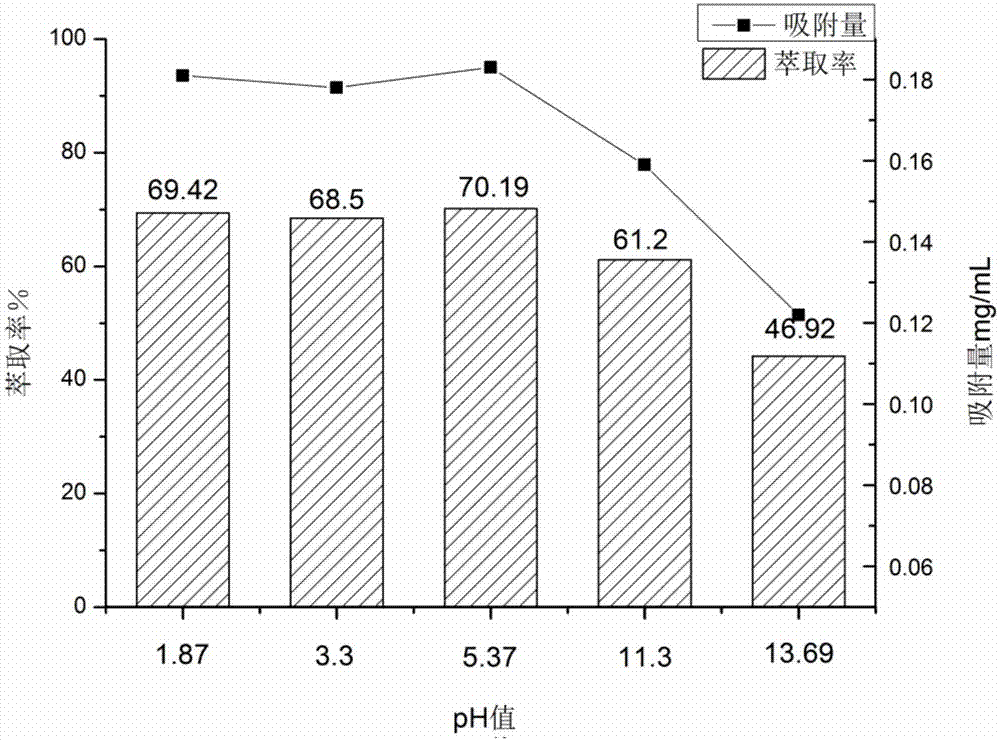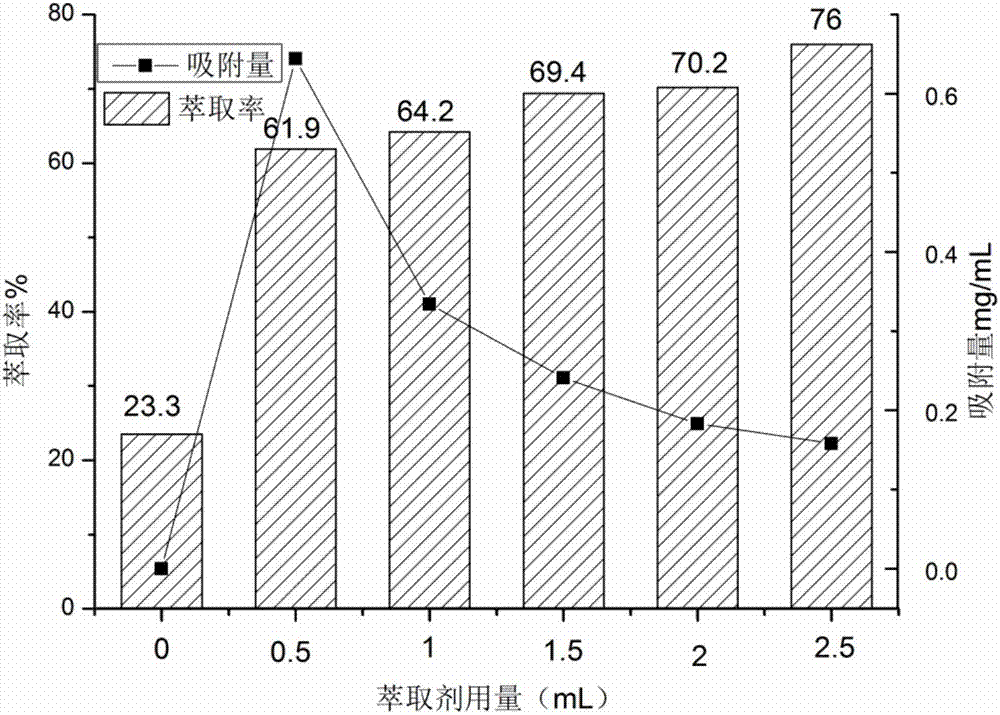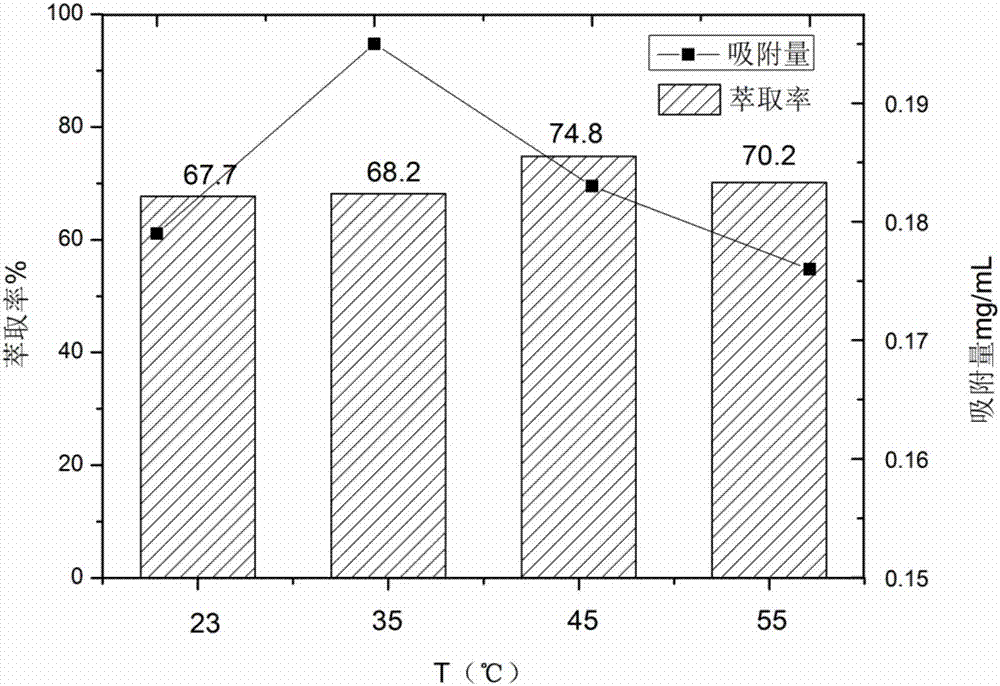Method for establishing biomass-based double aqueous phases and purifying harmful substances in salt solution
A technology of harmful substances and biomass, applied in the direction of water extraction/sewage treatment, etc., can solve the problems of secondary pollution, long growth process, easy deposition volume, etc., and achieve the effect of reducing the discharge of three wastes, fast reaction speed and simple process.
- Summary
- Abstract
- Description
- Claims
- Application Information
AI Technical Summary
Problems solved by technology
Method used
Image
Examples
Embodiment 1
[0034] Example 1: Using sodium alginate biocolloid as extractant, Cr 6+ For the extracted metal elements
[0035] Prepare the required chemical reagents and metal ion stock solutions, as shown in the table:
[0036]
[0037] Take 2mLCr 6+ The solution was placed in a 60mL separatory funnel, and 10mL of PEG-2000 stock solution was added, Na 2 SO 4 The solution is 6mL, the sodium alginate colloid is 2mL, and the pH is adjusted to 5.5. After shaking for 1 minute, let it stand. After the separation of the two aqueous phases is clear, release the lower phase, calculate the volume of the solution, and measure its Cr by flame atomic absorption method. 6+ According to calculation, the extraction rate can reach 88%.
Embodiment 2
[0038] Example 2: Using chitosan biocolloid as extractant, Cr 6+ For the extracted metal elements
[0039] Prepare the required chemical reagents and metal ion stock solutions, as shown in the table:
[0040]
[0041] Take 2mL containing Cr 6+ The solution was placed in a 60mL separatory funnel, and 10mL of PEG-2000 stock solution was added, Na 2 SO 4 The solution is 6mL, the chitosan colloid is 2mL, and the pH is adjusted to 5.5. After shaking for 1 minute, let it stand. After the separation of the two aqueous phases is clear, release the lower phase, calculate the volume of the solution, and measure its Cr by flame atomic absorption method. 6+ According to calculation, the extraction rate can reach 81%.
Embodiment 3
[0042] Example 3: Using sodium alginate biocolloid as the extractant and levofloxacin as the extracted substance
[0043] Prepare the required chemical reagents and metal ion stock solutions, as shown in the table:
[0044]
[0045] Take 2mL of levofloxacin solution in a 60mL separatory funnel, add 10mL of PEG-2000 stock solution, Na 2 SO 4 The solution is 6mL, the sodium alginate colloid is 2mL, and the pH is adjusted to 6.1. After shaking for 1 minute, let it stand. After the separation of the two aqueous phases is clear, the lower phase is released. After calculating the volume of the solution, the content of levofloxacin is calculated by UV spectrophotometry, and the extraction rate is calculated to be 83%
PUM
 Login to View More
Login to View More Abstract
Description
Claims
Application Information
 Login to View More
Login to View More - R&D
- Intellectual Property
- Life Sciences
- Materials
- Tech Scout
- Unparalleled Data Quality
- Higher Quality Content
- 60% Fewer Hallucinations
Browse by: Latest US Patents, China's latest patents, Technical Efficacy Thesaurus, Application Domain, Technology Topic, Popular Technical Reports.
© 2025 PatSnap. All rights reserved.Legal|Privacy policy|Modern Slavery Act Transparency Statement|Sitemap|About US| Contact US: help@patsnap.com



